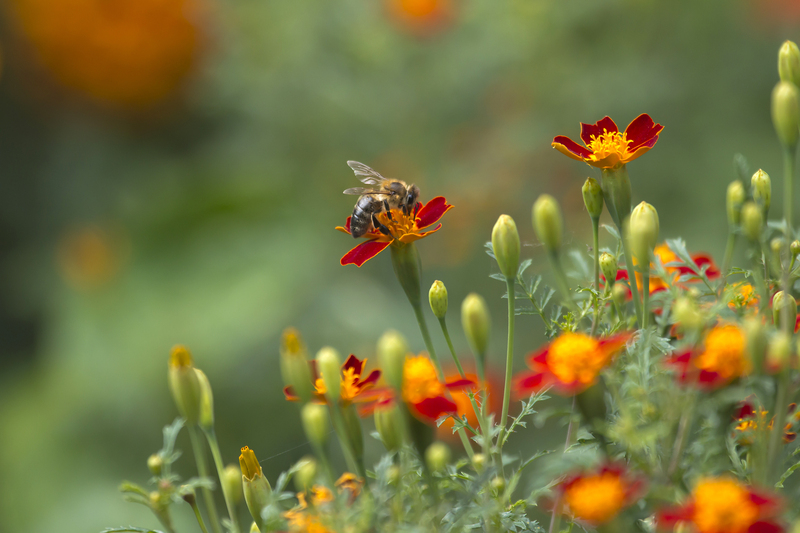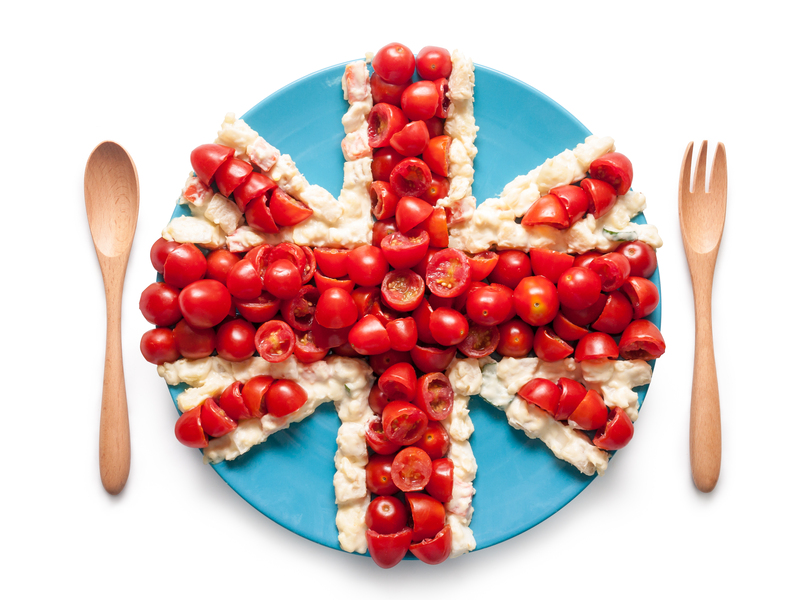Unveiling the secrets of growing plants in containers
Posted on 23/08/2025
Unveiling the Secrets of Growing Plants in Containers
Container gardening is revolutionizing how we approach horticulture, allowing urban dwellers, balcony owners, and those with limited space to experience the joys of cultivating lush foliage, fragrant flowers, and nutrient-rich vegetables. The secrets of growing plants in containers aren't just reserved for seasoned gardeners. With the right techniques, anyone can unlock the potential of a thriving miniature garden. In this comprehensive guide, we'll unveil the essential tips, tricks, and knowledge needed to master the art of container plant cultivation.

Why Choose Container Planting?
Container gardening offers a plethora of benefits, making it a popular choice for both beginners and experts alike. Some of these advantages include:
- Space Efficiency: Perfect for apartments, patios, or small yards where ground space is limited.
- Mobility: Easily move your plants to catch the best sunlight or protect them from harsh weather.
- Soil Control: Minimize soil-borne diseases by using high-quality potting mixes.
- Variety: Experiment with a diverse range of plants that might not thrive in your native garden soil.
- Aesthetic Appeal: Instantly enhance any space with colorful blooms or eye-catching foliage.
As urbanization accelerates, growing plants in pots and containers is more than a trend--it's a solution for food security, nutrition, and mental wellness.
The Fundamentals of Container Gardening
1. Choosing the Right Container
Not all pots are created equal. The secrets to successful container plants begin with selecting a suitable vessel. Consider the following factors:
- Size: Plants require sufficient space for root development. As a general rule, larger plants need larger containers.
- Material: Terracotta, ceramic, plastic, and metal pots each offer unique benefits. Terracotta is breathable but dries quickly, while plastic retains moisture well but can overheat in direct sun.
- Drainage: This is critical. All containers must have drainage holes to prevent root rot.
2. Selecting the Ideal Soil
The foundation of any successful container garden is the potting media. Ordinary garden soil is too dense. Instead, opt for a high-quality potting mix that provides:
- Good drainage to prevent waterlogging.
- Aeration for healthy root growth.
- Nutrient content to feed your plants.
You can also amend commercial potting mixes with perlite, vermiculite, or organic compost to further boost fertility and drainage.
3. Understanding Light Needs
Different plants demand different light levels. Growing plants in containers successfully means matching the right plant to the right location. Here's a quick guide:
- Full Sun Lovers: Tomatoes, basil, peppers, petunias.
- Partial Shade Seekers: Lettuce, spinach, begonias.
- Shade Thrivers: Ferns, impatiens, coleus.
*Monitor sunlight throughout the day to ensure your containers receive optimal exposure.*
4. Watering Wisdom
Plants in pots dry out quicker than those in the ground. Consistent, adequate watering is paramount. Here are some container gardening watering secrets:
- Check soil moisture daily during hot weather; stick your finger an inch deep into the soil--if it feels dry, it's time to water.
- Water deeply until you see water draining from the bottom.
- Consider self-watering containers or drip irrigation for convenience.
- Avoid letting water sit in saucers, as this can cause root rot.
Sneaky Secrets to Thriving Container Plants
Choosing the Right Plants for Containers
Some plants adapt better to containers than others. Popular container gardening plants include:
- Herbs: Basil, rosemary, thyme, parsley
- Vegetables: Tomatoes, peppers, lettuce, radishes
- Flowers: Geraniums, petunias, marigolds, pansies
- Small Fruits: Strawberries, dwarf blueberries
- Ornamentals: Succulents, ferns, dwarf conifers
*Always match the plant to the size of your container and the growing conditions available.*
Feeding for Success
Since potted plants draw nutrients from a finite amount of soil, regular fertilizing is key. Here's how to feed plants in containers for lush growth:
- Use a balanced slow-release fertilizer at planting.
- Supplement with liquid fertilizer every 2-4 weeks during active growth.
- Monitor for nutrient deficiencies--yellowing leaves might indicate lack of nitrogen or other essentials.
- Avoid overfertilizing, which can damage roots and inhibit flowering.
Container Arrangement Secrets
Designing your container garden is both art and science. Use the "Thriller, Filler, Spiller" method for stunning displays:
- Thriller: A tall focal point plant in the center (or back if the container is against a wall).
- Filler: Bushy, mid-sized plants that surround and support the thriller.
- Spiller: Trailing plants that cascade over the sides of the pot.
This arrangement ensures visual interest from every angle and makes the most of your limited space.
Container Gardening Challenges & How to Overcome Them
Dealing with Pests and Diseases
While container-grown plants face fewer soil-borne issues, they're not immune. Keep your container garden healthy with these strategies:
- Inspect plants frequently for aphids, spider mites, and whiteflies.
- Remove dead leaves and debris promptly to prevent fungal outbreaks.
- Isolate any diseased plants from the rest of your collection.
- Use neem oil or insecticidal soap for organic pest management.
- Avoid overwatering and overcrowding, which promote disease.
Protecting from Extreme Weather
One of the advantages of growing plants in containers is portability. Use this to your benefit:
- Move sensitive plants indoors or to sheltered spots during heatwaves or cold snaps.
- Group pots together to create microclimates and shield each other from wind.
- Mulch container soil with pebbles or straw to buffer temperature swings and retain moisture.
Root Health Tips
Roots are the hidden heroes of thriving container gardens. Unlock the secrets to healthy container plant roots:
- Don't let roots become "pot-bound"--repot into larger containers as plants grow.
- Use well-draining soil to avoid waterlogged roots.
- Prune roots occasionally when refreshing or moving plants to prevent overcrowding in the pot.
The Seasonal Secrets of Container Planting
Spring & Summer Container Care
- Start seeds indoors, then move seedlings outdoors as weather warms.
- Watch for rapid soil drying; increase watering frequency.
- Fertilize regularly as plants grow fastest now.
- Pinch back flowering plants to promote bushier growth.
Autumn & Winter Strategies
- Switch to cool-weather plants or bulbs as summer annuals fade.
- Protect pots from harsh frosts--move them against south-facing walls or bring indoors if possible.
- Reduce watering as plants go dormant, but don't let soil dry out entirely.
- Clean and store empty pots for next spring or fill them with winter pansies and ornamental kale.
Creative Secrets for Unique Container Gardens
Experiment with Unusual Containers
- Old wheelbarrows, teapots, boots, or wooden crates make excellent and creative containers for plants.
- Ensure all upcycled containers have adequate drainage holes before planting.
- Use multi-tiered plant stands or vertical garden walls to maximize space and add visual intrigue.
Mixing Edibles and Ornamentals
Don't be afraid to blend vegetables and flowers! For example:
- Pair purple basil with marigolds for a vibrant, pest-repelling combo.
- Mix lettuce with pansies or violas--both are edible and beautiful!

Frequently Asked Questions About Growing Plants in Containers
How often should I water my container plants?
Most container plants need water once the top inch of soil is dry. In the height of summer, daily watering may be required. Always water thoroughly until you see it seep from the drainage holes.
What's the best soil for container gardening?
Always use a high-quality commercial potting mix, not garden soil. Amend with compost or perlite for enhanced drainage and fertility.
Can I reuse potting soil each year?
You can reuse potting soil if you refresh it by removing old roots, mixing in compost, and ensuring it hasn't been infested by pests or diseases.
Do all plants grow well in containers?
No; some deep-rooted or fast-growing plants (like corn or large trees) are better suited to the ground. Choose compact, bushy varieties adapted for pots.
Is it possible to grow fruit trees in containers?
Yes! Many dwarf fruit trees, such as lemons, limes, and figs, are bred specifically for containers. They may not grow as large but can still bear delicious fruit.
Final Thoughts--Embrace the Art of Container Gardening
Container gardening is more than just a space-saving solution; it's an invitation to explore endless creativity, adaptability, and green thumb satisfaction. By unveiling the secrets of growing plants in containers, you can cultivate vibrant flowers, aromatic herbs, or bountiful vegetables regardless of your environment. Remember, the success of your container garden lies in the details--choosing the right pots, soil, watering regime, and plant selections. Don't be afraid to experiment, observe, and adjust as you go. With these insights, even the smallest balcony can become a veritable paradise.
Dig in today and watch your container garden flourish!

